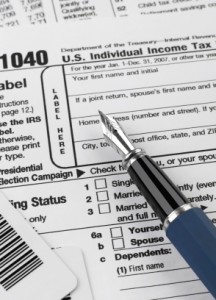Posted on Sep. 5th 2007 by Amelia
The Undercurrent in Undergraduate Education
As exciting as college prep can be, there is an alarming undercurrent that threatens almost half the population of incoming freshman—attrition. How do colleges and universities keep disillusioned students from dropping out?
The number of college freshman dropouts is typically cited between 1 in 4 or 1 in 5, with some sources positing arguments that nearly half of all college students fail to graduate. Surveys of high school students show no lack of interest for a college degree, in fact 95% of high school students when asked about college indicated a “very strong desire†to complete a degree program.1 If only a fraction of those respondents actually earns a degree, then what happened to change their attitude and/or desire?
A complex array of contributory factors may be to blame, and a growing stable of remedies offered for their cure. But what are the fundamental causal factors of college freshmen attrition and how can they be more directly halted?
High School Grads Poorly Prepared for Campus Challenges
High schools are generally motivated to make sure students go to college. The drive to go to college has little to do with the success rates of students, however. In fact, a mountain of research clearly illustrates that the motivation to excel in college has little to do with the reality of contemporary campus living. The real meat of the drop out problem is the academic preparation, or lack thereof, that students receive prior to arrival on campus.
High School Seniors that “Blow Off†School Likely to Suffer on Campus
A common practice among high school seniors is to take that last year as easy as possible, blow it off, waste it in easy courses. Perhaps this worked, once upon a time, but today’s high school senior slumming it his or her last year is doing more harm than good, report most studies.2 College advisers these days urge high school seniors to avoid “resting on their laurels,†and instead spend their senior year immersed in courses that pose academic challenge. This is the best method for college prep, say administrators. A Department of Education study proved the importance of academic challenge in regards to college performance:
“…the academic intensity of a student’s high school course work was the top factor influencing whether students earned a college degree — more than family income, high school grades, ethnicity or test scores.â€3
Even for students that work very hard and then take it easy their final year of high school the odds are not so good. This is a wasted year, time in which every bit of a student’s good work can be undone. Given the fact that studies show students lose learned knowledge over the course of a summer break, it’s understandable how they could become quite academically bankrupt, after a full year of cushy coursework and time off from serious studies. Their GPAs are still high, but academic agility is low.
High School Students Fail New College Admissions Standards
College admissions standards have also become a major hurdle to clear for students. Add on a “lost†year of academics and students that for all intents and purposes should be college-ready, are unable to make the academic cut. Colorado State University system’s administrators decided, out of sheer necessity, to ease new admissions requirements for incoming freshman in the Fall of 2007, or risk losing about 20% of their incoming freshman class.4
Why the Strong Desire to Go to College?
Problem: 95% of high school students expect to earn a college degree and indicate a strong desire for the same, but, regardless, more and more incoming college freshman are disastrously unprepared and unmotivated to achieve that goal. What, then, drives them in herds onto America’s campuses every fall?
Those same student respondents that expressed the “of course†attitudes about college, also responded that their primary motivators for pursuing college were: good job, good salary.5 Somewhere between the illusion of the American Dream and a Bachelors degree lies the truth. Do students simply expect to earn a degree with little work? It makes sense that students whose educational experiences up through secondary school have been somewhat boring, unchallenging and downright lackluster, may expect that their college experience will be similar. Given this illusion, then of course, most students see a college degree in their future, and are justifiably caught very off guard when their first semester of college rolls around and kicks them squarely between the eyes.
What High-Performing High Schools Know That Others Don’t
Samples of select high school teaching methods and policies, chosen for their success rates with college-ready students, reveal fundamental strategies that consistently nurture college campus-ready high school students:
- High quality, experienced, and flexible teachers.
- Teachers capable of evaluating the teaching-learning paradigm and prepared to adjust techniques given the results.
- Auxiliary mentors, tutors, and after school study assistance, available and engaged.
- Advanced college preparatory coursework “beyond state and district standards.â€6
Any suggestion from naysayers that these methods would fail in certain high schools is moot– these methods belong to and were observed in practice in a handful of “high-performing†schools in high minority, high poverty areas. Which means, essentially, that if these methods work to develop the skills of high school students in disadvantaged schools, they should work in almost any high school in America. Furthermore, the study that distilled these findings was ultimately presented as a primer for education lawmakers.7
Some Students Face Deeper Challenges on Campus
Academic shortcomings notwithstanding, there are student populations that statistically struggle even harder.
Why First Generation Students Face Further Adversity
First-generation college students, especially minorities, face challenges stemming first and foremost from lack of familial support. In fact, the majority of ethnic minority students rate “parental influence†as a number one factor in their “educational choices.â€8 This is not to say that parents do not want a college education for their children, but parents without experience of academic life beyond high school are less prepared to provide the emotional and psychological support and motivation necessary to keep their first-in-family student on campus. These types of students may also feel disenfranchised from higher education, and out of place with students whose families take college as a matter of course.
Male Freshman May Struggle with College Structure
Males are, on the average, less agile than their female counterparts when it comes to standardizing their on-campus lives, including organizational skills, prioritization and time management, and defining successful study habits and methods. Course assignments tend to fall behind and concrete goals are elusive. When these factors fall apart or are non-existent, males may be unable to remain academically buoyant, further supporting the alarming statistics: for every 100 women that graduate college, only 73 men will do the same.9
If so many college freshmen are surprised by the rigors of college academics—in combination with the traditional transition to campus life—that they are at risk for dropping out, then what’s being done to change the freshman experience?
Since America’s high schools are failing to adequately renovate curriculum or recruit (and pay for) the type of teachers necessary to maintain a high-performing program, then it must become the responsibility of colleges and universities to provide the necessary student support.
Freshman Survival: Retention Programs Stem Anxiety
Some college and university administrators are quite concerned that the drop out rate among college freshman is their responsibility. In response, retention programs have begun to spring up. Whether grassroots, campus-created, or pre-packaged Freshmen Survival courses administered by professional educational coaches, retention programs essentially guide students with bumpy campus transitions and connect them to the resources—academic, social, religious, medical, financial—they will need to succeed on campus.
Preparedness for college life goes well beyond the pale of sheer academics. Fueling the need for transition programs. High school students are equally unprepared for the responsibilities of a more “adult†world. Common challenges that await freshman on traditional college campuses:
- Financial matters
- Study and time management
- Personal organization and prioritization
“Give Them Time, They’ll Find Their Way Aroundâ€
Students most likely to drop out do so before they reach their sophomore year. Some leave for holiday breaks, Spring Breaks, and summer vacation, and never return, some with little indication they are leaving. The general excitement about college quickly wanes, but many administrators still believe much of the work is done once kids are on campus. As bright an idea as retention programs seem, they are only being used on a fraction of America’s campuses—29%.10
Factors in College Retention: What Programs Can Be Put in Place to Help Students?
Over the last few years college administrators, as well as students, have tackled the issues inherent to student retention. A large number of colleges and universities of all kinds, collectively assigned the following practices as primary in retention programs:11
- Freshman seminars and courses.
- Academic assistance, from mentors and tutors to remedial courses.
- Available advisors willing to engage with students and offer sooner-than-later guidance on academic goals.
Alternative indicators suggest that there are other factors that make a difference in student engagement and transition:
- Evidence suggests that students with campus-based jobs are less likely to drop out. Perhaps they are more disciplined with study skills and time management.12
- Remediation programs, or high school level courses that help bring students up to speed with essential freshman courses. Remedial coursework remains popular in community college systems, a controversial issue in higher education, but possibly a strong reason why an increasing number of students are opting for 2+2 programs, or community college to four-year transfer programs. Some supporters of remedial programs insist the concept must be accepted among four-year colleges, as well, to stem the dropout rate or discourage transfers to community colleges.13
- Available advisers are seen by students as “concerned person[s] in the campus community†able to interact and connect with freshman. Student responses have suggested this type of “quality interaction†may be one of the simplest solutions for new students away from home for the first time and feeling lost in the shuffle.14
Retention Tools
Colleges and universities unable to design and develop their own retention programs may utilize pre-packaged programs or resources from a number of providers:
- Of the 29% of schools that have retention programs, 1315 so far participate in the “Foundations of Excellence in the First College Year.†Policy Center on the First Year of College administers this program with a mission to inspire college and university campuses to become “engaging†environments for first year students. With tools provided through the Foundations of Excellence program, institutions may conduct careful self-assessment of all aspects of campus life, including “policies and practices.†Eventually changes are developed—the outcome, a totally synthesized campus that embraces first year students and their experiences, instead of excluding and isolating.
- The National Resource Center for the First Year Experience and Students in Transition provides written materials, seminars, conferences, and networking opportunities for institutions interested in creating a “first year experience†worth hanging around to savor. The Center is best known for its University 101 course, an innovative and very successful program that guides new students in their shift to campus life.
- The Center for the Study of College Student Retention provides a stable of resources for institutions. Administrators have access to research specific to the issues, as well as a general guide designed to lead any institution through development of a retention program.
High Dollar Freshman “Coaches†Hit a Mother Lode
Plenty of lip service is paid to for-profit “coaching†services prior to college—professional assistance with admissions forms, guidance during college and financial aid processes, as well as scholarship and grant assistance. But some colleges and universities are paying top dollar for another kind of coaching service—retention coaches.
First year coaches function as a freshman’s guardian angel; they provide motivation when students feel down, guidance in mapping academic goals, and offer tips and advice for improving study habits, managing time, coexisting with roommates, and building successful relationships with campus faculty and advisers.16
A mere handful of student coaching businesses exist, but plenty more are sure to follow—the money making potential is great and this segment of the education market, so far untapped. But with service fees of “$800 to $1,400 per studentâ€17, what colleges and universities are paying? Apparently, plenty.
Freshman Attrition: No Easy Answer
Given the disparity of issues facing contemporary college freshmen, it’s clear there is no one easy answer to halt freshman dropouts. Students begin their college careers with little understanding of the impending rigors. Apparently high schools, save for a few high-performers, dish up less than desirable college preparatory curriculum. Admission to a college would also seem to validate a students’ academic record, but this is misleading, as well.
Retention programs are likely to continue spreading among college campuses; they must. Sources suggest that the federal government may soon challenge higher education on the dropout issue, perhaps with fines for high numbers of students that fail to make it to graduation.
First year on campus, given all the factors at work, is a tricky balancing act. Groundwork for first year transitions must be built. On the other end of the spectrum, is it just a dream that U.S. high school education will make the sweeping changes necessary to lead kids to college level academics; to inspire them as opposed to bore them?
1 National Freshman Attitudes Report, Noel-Levitz, 2007, accessed August 30, 2007,
2 Perez, Gayle, “Educators Support Temporary Lower Admissions Standards,†August 17, 2007, accessed August 27, 2007, http://www.chieftain.com/metro/1187335298/6.
3 “Study: One in Five Drop Out of College Before Sophomore Year,†Albany Democrat-Herald, February 21, 2006, accessed August 27, 2007, http://www.democratherald.com/articles/2006/02/21/news/oregon/state03.txt
4 “Study: One in Five Drop Out of College Before Sophomore Year,†Albany Democrat-Herald, February 21, 2006, accessed August 27, 2007, http://www.democratherald.com/articles/2006/02/21/news/oregon/state03.txt
5 National Freshman Attitudes Report, Noel-Levitz.
6 “Preparing All High School Students for College and Work: What High-Performing Schools are Teaching,†ACT, February 23, 2005, accessed August 30, 2007, http://www.act.org/news/releases/2005/2-23-05.html .
7 Implications for Policymakers, ACT, 2005, accessed August 30, 2007, http://www.act.org/path/policy/pdf/success_implications.pdf.
8 Szelenyi, Katalin, “Minority Student Retention and Academic Achievement in Community Colleges,†2004, accessed August 29, 2007, http://www.ericdigests.org/2001-4/minority.html .
9 National Freshman Attitudes Report, Noel-Levitz.
10 Draeger, Justin, “An Examination of First-Year College Students,†NASFAA, 2007, accessed August 26, 2007, http://www.nasfaa.org/publications/2007/examinationoffirst-yearcollegestudents.html .
11 Wesley Habley, Randy McClanahan, What Works in Student Retention? All Survey Colleges, ACT, 2004, accessed August 30, 2007, http://www.act.org/path/postsec/droptables/pdf/AllColleges.pdf .
12 Cermak, Katherine, “On-Campus Employment as a Factor of Student Retention and Graduation,†DePaul University, February 19, 2004, accessed August 26, 2007, http://oipr.depaul.edu/open/gradereten/oce.asp .
13 Gehrman, Elizabeth, “What Makes Kids Drop Out of College?†Harvard University Gazette, May 4, 2006, accessed August 26, 2007, http://www.news.harvard.edu/gazette/2006/05.04/13-dropout.html
14 “Many U.S. Colleges Overlooking a Potential Cure for College Dropouts,†ACT News, June 23, 2004, accessed August 26, 2007, http://www.act.org/news/releases/2004/6-23-04.html .
15 “MSU Fights to Retain Freshman Students,†KFYR-TV, August 21, 2007, accessed August 26, 2007, http://www.kfyrtv.com/News_Stories.asp?news=9751 .
16 DeBare, Ilana, “Executive Style Coaches Put College Students on Track to Success,†San Francisco Chronicle, August 19, 2007, accessed August 26, 2007, http://www.sfgate.com/cgi-bin/article.cgi?f=/c/a/2007/08/19/BU2QRJB29.DTL .
17 DeBare, “Executive Style Coaches Put College Students on Track to Success.â€




 When applying to a college or a university, it is extremely important to understand the difference between a “reach school” and “safety school.” Due to the fact that admissions offices are receiving applications at record-high numbers, the acceptance rate for many universities and colleges has dropped considerably over the past few years. Because of this, many “safety schools” for high school students have suddenly become “reach schools” because their chances of not getting accepted are much higher than before.
When applying to a college or a university, it is extremely important to understand the difference between a “reach school” and “safety school.” Due to the fact that admissions offices are receiving applications at record-high numbers, the acceptance rate for many universities and colleges has dropped considerably over the past few years. Because of this, many “safety schools” for high school students have suddenly become “reach schools” because their chances of not getting accepted are much higher than before. 3. “You have just completed your 300-page autobiography. Please submit page 217.” (University of Pennsylvania)
3. “You have just completed your 300-page autobiography. Please submit page 217.” (University of Pennsylvania)
 Instead, they took the actual number of reported years it took a student to graduate from each institution to compile the costs of college. In addition, PayScale also attempted to take into account those who attended school yet never graduated.
Instead, they took the actual number of reported years it took a student to graduate from each institution to compile the costs of college. In addition, PayScale also attempted to take into account those who attended school yet never graduated.
 That’s right, a button that would authorize the IRS to collect, summarize and drop the pertinent data already submitted during prior tax seasons into the form in the appropriate places. And with that step, the form we all have to do to be eligible for federal financial aid, the form that everyone, sooner or later comes to despise might actually be on the way towards being reasonable and dare we say it, user-friendly.
That’s right, a button that would authorize the IRS to collect, summarize and drop the pertinent data already submitted during prior tax seasons into the form in the appropriate places. And with that step, the form we all have to do to be eligible for federal financial aid, the form that everyone, sooner or later comes to despise might actually be on the way towards being reasonable and dare we say it, user-friendly. According to the U.S. Department of Education, the FAFSA included 153 questions, some of which were not asked for when parents or the student filed their income taxes. The sum total for the DOE is that the form has ultimately been more difficult than filing income taxes.
According to the U.S. Department of Education, the FAFSA included 153 questions, some of which were not asked for when parents or the student filed their income taxes. The sum total for the DOE is that the form has ultimately been more difficult than filing income taxes.  For reporting purposes, the school was supposed to be sending along the number of full-time faculty members that met the prestigious status. Turns out, of the 34 listed on the web site, 17 did not meet the criteria set forth by U.S. News.
For reporting purposes, the school was supposed to be sending along the number of full-time faculty members that met the prestigious status. Turns out, of the 34 listed on the web site, 17 did not meet the criteria set forth by U.S. News.
 President Lyndon B. Johnson dreamed of building our country into one in which “a high school senior [could] apply to any college or any university in any of the 50 States and not be turned away because his family is poor…” He further declared, “Education in this day and age is a necessity.”1 He made these statements on the same day he signed the Higher Education Act of 1965 into legislation. If higher education was deemed a necessity in 1965, then it has become critical by today’s standards.
President Lyndon B. Johnson dreamed of building our country into one in which “a high school senior [could] apply to any college or any university in any of the 50 States and not be turned away because his family is poor…” He further declared, “Education in this day and age is a necessity.”1 He made these statements on the same day he signed the Higher Education Act of 1965 into legislation. If higher education was deemed a necessity in 1965, then it has become critical by today’s standards. 
 For students interested in pursuing college the process becomes a bit like fumbling in the dark: “many low-income college students need aid and do not know how to apply for federal or state assistance.”5 Low-income students often opt for a community college—open access and remedial coursework, and schedule flexibility that allows students to work part time and carry on normal family responsibilities.
For students interested in pursuing college the process becomes a bit like fumbling in the dark: “many low-income college students need aid and do not know how to apply for federal or state assistance.”5 Low-income students often opt for a community college—open access and remedial coursework, and schedule flexibility that allows students to work part time and carry on normal family responsibilities.  Does a high quality teacher make a difference to a low-income and/or disadvantaged student, and if so, why? A growing body of evidence shows that teachers do matter. But studies have begun to prove an alarming trend: “The very children who most need strong teachers are assigned, on average, to teachers with less experience, less education, and less skill than those who teach other children.”8
Does a high quality teacher make a difference to a low-income and/or disadvantaged student, and if so, why? A growing body of evidence shows that teachers do matter. But studies have begun to prove an alarming trend: “The very children who most need strong teachers are assigned, on average, to teachers with less experience, less education, and less skill than those who teach other children.”8 
 Compared to the relatively small number of college administrators backing away from the ratings game, there are plenty that believe in its promise. For instance, a strong cadre of schools believes the marketing theory that overpriced products and services attract buyers and consumers because high price implies high quality. This then is why tuitions are hiked and SAT and GPA requirements inflated. Yet again, disadvantaged students are unable to reach certain institutions where, ironically, money is likely to exist for their education.
Compared to the relatively small number of college administrators backing away from the ratings game, there are plenty that believe in its promise. For instance, a strong cadre of schools believes the marketing theory that overpriced products and services attract buyers and consumers because high price implies high quality. This then is why tuitions are hiked and SAT and GPA requirements inflated. Yet again, disadvantaged students are unable to reach certain institutions where, ironically, money is likely to exist for their education.  Consider the idea that many minority and low-income students come from first generation families, meaning no one else has yet gone to college. For many average American students, the dream of a college degree is fueled over the years by parents. When that drive is not there, other priorities may take precedence, such as job, finance and family.
Consider the idea that many minority and low-income students come from first generation families, meaning no one else has yet gone to college. For many average American students, the dream of a college degree is fueled over the years by parents. When that drive is not there, other priorities may take precedence, such as job, finance and family.  The nation’s low-income students, including those with academic fortitude and those dubbed low-achievers, may share common bonds: many face familial and cultural obstacles, but do they also face low educator expectations? Studies have already measured the effect of educator expectation on the college outcomes of low-income, minority students and found alarming numbers of low-quality teachers and counselors with little hope for students in lower income brackets.
The nation’s low-income students, including those with academic fortitude and those dubbed low-achievers, may share common bonds: many face familial and cultural obstacles, but do they also face low educator expectations? Studies have already measured the effect of educator expectation on the college outcomes of low-income, minority students and found alarming numbers of low-quality teachers and counselors with little hope for students in lower income brackets.  Considering the obstacles discussed above, are there further psychological impacts? If I am a student from a low-income household in which neither of my parents attended college, isn’t it likely that a college degree will not be a main priority in my life? And if I am academically talented, would I not feel out of place and disenfranchised on a Harvard campus even if my education were fully funded?
Considering the obstacles discussed above, are there further psychological impacts? If I am a student from a low-income household in which neither of my parents attended college, isn’t it likely that a college degree will not be a main priority in my life? And if I am academically talented, would I not feel out of place and disenfranchised on a Harvard campus even if my education were fully funded? 